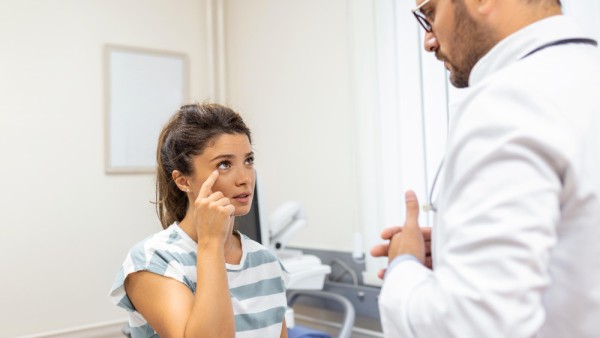Wellness
oi-PTI
on July 20, 2022
Researchers in the UK claim to have developed a low-cost device that can take 3-D images of the eye, a pioneering technology that they say can transform eye screening and treatment across the globe.
The device, developed by researchers from the University of Strathclyde, captures 3-D images of the retina, the back of the eye and cornea, and can be added at low cost to a slit lamp, a device commonly used by optometrists.
Although there are existing instruments for 3-D imaging, including Optical Coherence Tomography technology – the machines can cost up to 100,000 pounds, often making them too expensive for large-scale public use, especially in low-income countries.
The new technology is a simple and inexpensive add-on to a standard lamp, and can extend 3-D eye imaging to all settings where optometrists are present, the University of Strathclyde said in a release on Monday.
It is so simple that a modified version of the technology brings the potential of 3-D retinal ‘selfies’ without an operator, meaning it could also be deployed in unassisted settings, like pharmacies, it said. The technology can also be used to image the front of the eye, which is important for cornea transplant patients as many machines can’t measure the edge of the cornea, it said.
The device has been developed by Dr Mario Giardini, Dr Ian Coghill, and Kirsty Jordan, at the Department of Biomedical Engineering at the University of Strathclyde.
READ RELATED: Drunk driver Damon Lee Anderson jailed for running down two pedestrians in Perth's CBD
“Patients can be imaged easily and inexpensively, without the need for a specialist to be present. Our device reliably takes 3-D images, and it is comfortable and fast, in less than a second, “Giardini said.
“The technology has the potential to revolutionise the screening and follow-up within the community of conditions such as glaucoma, as any optometrist, anywhere in the world, could afford it. This work makes eye diagnostics more accessible, reducing inequalities,” Giardini added.
The researchers also hope it can eventually be used to detect eye cancer. Dr Livingstone, Consultant Ophthalmologist at NHS Forth Valley, who has collaborated with Dr Giardini on previous ophthalmology projects, said: “So much of what we do as eye doctors depends on seeing things in 3D. While photographs can be helpful, this innovation uses visible light to re-create a high fidelity 3-D representation of eye structures, allowing precise measurements to be taken in a completely new way, piggybacking on the method of examination we already do routinely.”
The initial prototyping was funded by the Engineering and Physics Research Council, part of UK Research & Innovation. The next step is to make the technology available to the medical community, and the University has partnered with IDCP, a digital innovation group, to turn it into a medical product, the release added.
GET THE BEST BOLDSKY STORIES!
Allow Notifications
You have already subscribed
Story first published: Wednesday, July 20, 2022, 11:24 [IST]
Source:










